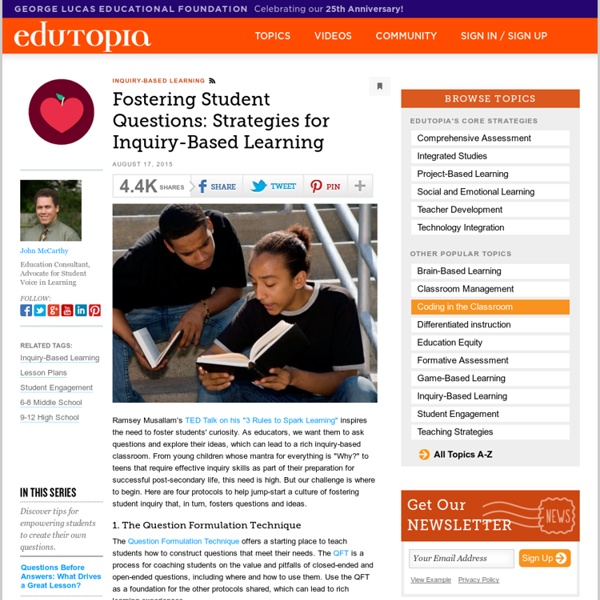Motivating the Unmotivated
Here's an all-too-common scenario: A group of elementary or middle school students are unruly, disrespectful and underperforming academically and socially in the classroom. They do not appreciate the value of education. The teacher, despite good intentions and passion, is viewed as an adversarial or irrelevant authority figure. Classroom teaching can best be accomplished -- and sometimes can only be accomplished -- if a student is willing to be taught. In his book Dropping Out, Russell Rumberger lays out the societal consequences, including: . . . poor academic performance in middle school and even elementary school can decrease a student’s motivation in high school, which can lead to failing courses and skipping school, . . . Statistic Brain provides this information: Image Credit: Chelsea Dale So what can be done? Focus, Commitment, Reinforcement, Effectiveness, Fun The goal: Students who respect their teachers, schools, peers, and the learning process.The key: Student motivation. 1. 2. 3.
Harry & Rosemary Wong: Effective Teaching - Teachers.Net Gazette
How to Start Class Every Day Making Your Students Feel Seen Greeting students will have the most immediate impact on your day or each class period. A sincere greeting establishes a positive climate for the classroom. You experience greeting people in daily life. You are greeted when you visit someone’s home or business, board an airplane, enter a place of worship, or just see a friend. In the business world, the importance of a greeting is understood. Your wait person welcomes you and takes care of your needs. It makes sense that greetings would apply in your classroom. It Begins at the Door At many schools and in many classrooms, discipline is not a factor, bullying does not exist, and more importantly, students are on task and doing their classroom work. This is the doorway of Karen Rogers, a high school teacher in Olathe, Kansas. Greeter Leaders The teachers model the “greeter leader procedure” for the children. The student being greeted responds, “Good Morning,” in return. R. At A. A.
Going with the "Flow": Teachers' Perspectives about When Things Really Work, Online Submission, 2014-Jul-22
This research studies teachers' experience with the concept of "flow." Flow can be described as a state of being in which one is fully engrossed in the activity. When activities are in "flow," there is a sense of immersion, high energy, joy, and focus. Descriptors: Teacher Attitudes, Teaching Experience, Reflection, Teacher Participation, Educational Environment, Graduate Students, Inservice Teacher Education, Reflective Teaching, Risk, Performance, Teacher Effectiveness, Best Practices, Interpersonal Relationship
How to Design a Classroom Built on Inquiry, Openness and Trust
Teachers who are interested in shifting their classrooms often don’t know where to start. It can be overwhelming, frightening, and even discouraging, especially when no one else around you seems to think the system is broken. A question I’m asked often is, “Where should a teacher begin?” Should teachers just let students go or is there a process to good student-centered inquiry? I’ve reflected on this a fair amount, and I think small strategic steps are the key. I think letting students “go” without any structure will likely create failure, especially if students haven’t spent much time collaborating. Many teachers have likely engaged in some type of inquiry or project-based learning, but with frustrating or dismal results. When I start with a new group of students, the design is tight. I’ve also discovered I need to teach the difference between collaboration and cooperation. Start with creating one inquiry unit in one subject. Talk to your students about their learning — a lot.
Thoughts on Education: BreakoutEDU on the 1st Day of School? Why Not!!
BreakoutEDU on the 1st Day of School? Why Not!! I designed a Breakout for the first day of school, and the energy was electric. The kids have been begging for another one, every day since. After participating in a BreakoutEDU session at the Stanislaus GAFE Summit this summer, I was intrigued. I started out by thinking of the things I would normally do the first day: Put students in ABC order by their first name, have them join my Google Classroom, get them to explore my website, etc… Then I worked out how to make those tasks into clues. Here is my map with all of the pieces, put together on a Google Drawing. I started it off with a Google form I wanted to them to fill out so I could get to know them better. Next I had them line up in ABC order by first name to get their class numbers. Then, I showed them the Google Form that would be their lockbox for the day (My next breakout will be with a physical box and locks, but the digital one worked great too!). Them: Yeah, Google Classroom.



